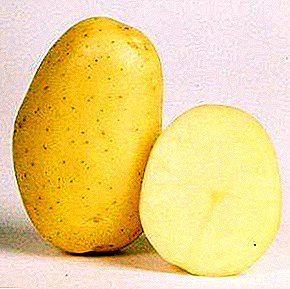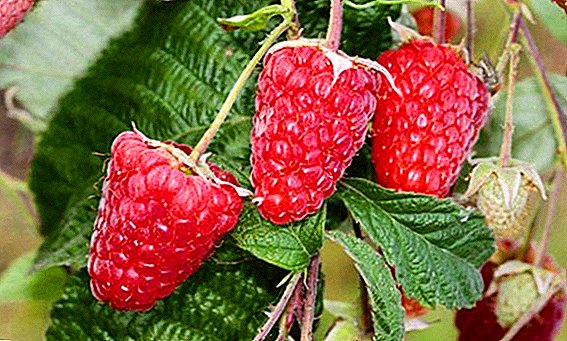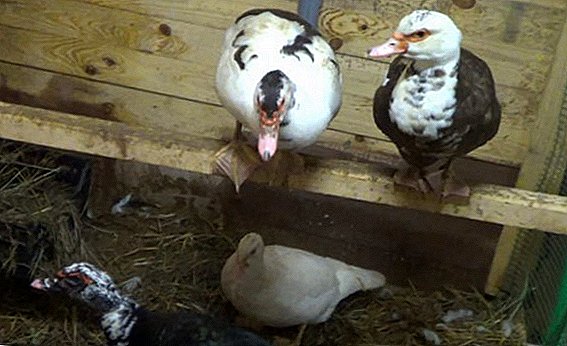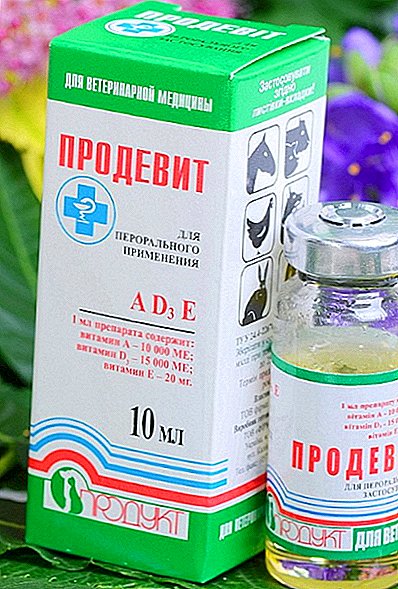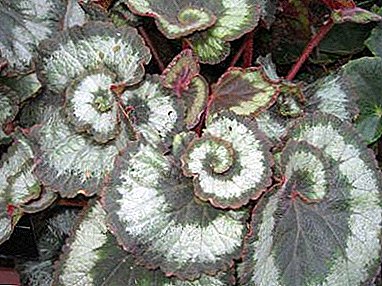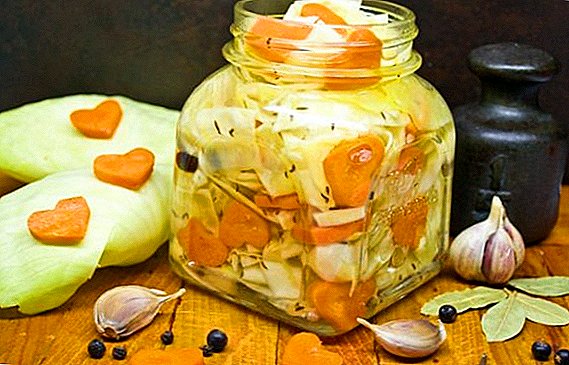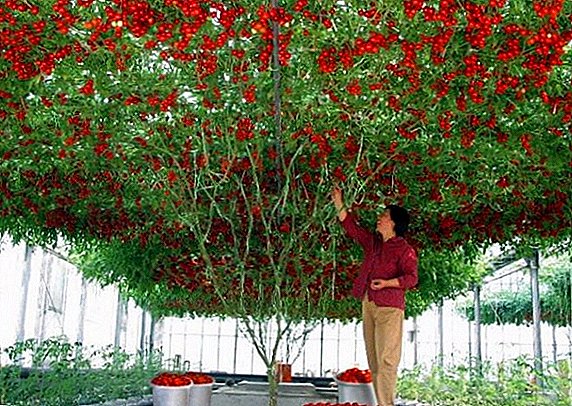
Begonias are a favorite decoration of our window sills and balconies. The Begonia family has more than one and a half thousand different species. Bolivian Begonia is an interesting and noteworthy representative of the family. Luxuriously flowering plant deserves a place in the collection of the room flora lover. In this article, we learn about the description and history of the Bolivian begonia, its varieties and planting process, the requirements for soil and care, the most common pests of begonia and tips for pest control, as well as growing from seeds.
Botanical description and history
Begonia plants belong to the flowering, dicotyledonous plants. Herb, shrub, shrub, perennial, annual - all about different types of begonias. Begonias reproduce both by leaves and tubers, and by cuttings and seeds that ripen in fruit-boxes. To learn how to propagate the tuberous begonia by cuttings, read our material.
Homeland of wild begonias - tropical rain forests in the mountains of Africa, Southeast Asia and Central and South America. Travelers brought exotic plants to Europe in the eighteenth century. Begonias quickly won the love of collectors.
The list of begonias growing on European window sills was updated with new species and varieties. The plants were not only elegant in appearance, but also unpretentious. Tuberous Bolivian begonia grows wild in highlands in the east of the Andes. This is a low tuberous annual. It has an elegant appearance: elongated shoots with oblong leaves. During flowering, it pleases the eye with whole waterfalls of small, bright, elegant flowers, gathered in small inflorescences.
Varieties with photos
The most popular varieties of the hybrid Bolivian begonia - "Copacabana" and "Santa Cruz". Both multiply by seeds, grow in height to 30-35 centimeters. Then there is an active growth of shoots. Due to this, begonia forms either an ampel form or a flowerbed is carpeted (you can learn about plant amorphous begonia and how to grow it here, and here we told how to plant an ornamental plant and take care of it at home and in the open field). Below are descriptions of these varieties with photos.
Copacabana

Blossoms in a lush heap of orange flowers. It is positioned as a plant that is quite resistant to both dry and rainy weather, as well as to direct sunlight.
Santa cruz

During flowering admires cascades of flowers in orange-red tones. Also unpretentious to the conditions, like copacabana. It can grow well and bloom both in partial shade and in bright enough sun.
Where and how to plant it?
Bolivian begonia is a universal plant. Bolivian is suitable for outdoor flowerbeds, gardening for balconies, and for home window sills (about how to plant tuberous begonia, and about the basic rules of caring for it, you can find out here). Subtleties of landing at home and in the open field. The flower beds and alpine slides are usually chosen so that the begonia could cover the entire area in a circle with its shoots (their length is up to 80 cm). Hanging flowerpots with begonias and pots can be placed both on the wall of the apartment, and on the balcony, veranda or in the courtyard of the cottage.
Soil requirements
Flower shops sell special ground for begonias. For indoor and balcony cultivation, it is perfect. It is easy and prepare the soil yourself. For the tuberous species, the following mixture is good: two parts of leafy ground from under large deciduous trees - one part of river sand - one part of sod land.
If begonias land in open ground, on a flower bed, then the best option for the plant is nutritious, loose soil. If the ground is not sufficiently loose - you can add sand, flavor it with leaf humus, peat. The soil must be air permeable.
How to care?
Bolivian begonia - unpretentious plant. Just remember a few rules to care for her, and she will feel great.
 The flower pot can be of any material (it does not play a role for tuberous plants). It is only important to choose a capacity that is not too deep, but rather wide.
The flower pot can be of any material (it does not play a role for tuberous plants). It is only important to choose a capacity that is not too deep, but rather wide.- Watering is carried out with water at room temperature (too cold water - not suitable!). You can water two or three times a week. It is necessary to ensure that water does not fall on the leaves. When the begonia blooms, you can water more often. Do not "fill" the flower, it is fraught with its diseases. There should be good drainage in the pot.
- Please note: in hot and dry weather, begonias need to be further moistened. It is recommended to carry out spraying. It should not be sprinkled on the leaves themselves, it is better to moisten the air around the plants with a spray bottle.
- To stimulate the abundant and prolonged flowering plants can be fed. It is enough to make mineral fertilizer once a month.
- Although the Bolivian begonia is called a species resistant to direct sunlight, it is still better to save it from the bright sun. This light should be enough. Sometimes it is better to slightly priten the plant.
You can find out about the rules of tuberous begonia care, as well as the intricacies of planting it at home and in the open field, and here we wrote about how to take care of the plant in winter.
Common diseases and pests
- Excessive moisture for begonias is destructive.
If the pot is stagnant of moisture - the plant may rot, its stems and leaves will begin to turn black. It is necessary as soon as possible to remove all the blackened parts, process the begonia with antifungal agent - a fungicide. It is best to change the top layer of soil to fresh and dry.
- Fungi may appear in watery soil.
The most common is gray rot. It manifests itself as a gray bloom on the leaves and mucous on the buds.
Method of struggle: spraying the begonia with a solution of copper sulfate and laundry soap (in one liter of water we mix well two grams of vitriol and twenty grams of soap).
- The appearance of powdery mildew is also associated with an excess of moisture. The leaves are covered with gray specks.
Reference! Homemade "first aid" from powdery mildew: make a solution of laundry soap and gently wipe the leaves.
- If buds fall off, this is evidence of plant overflow and / or too dry air.
The actions are obvious: reduce watering and spray more often.
- If the leaves dry and turn yellow, two options are possible.
Either the begonia is “flooded” or, on the contrary, the ground is too dry. It is required to correct the situation for the better. It may be worth feeding begonia: not enough nutrients for growth and flowering.
- Any burns on the leaves? Time to prepenitize the plant or move it to a less-lit window sill.
About why tuberous begonia does not bloom and what to do, as well as about diseases, pests and ways to combat them, read here.
Growing from seed
Bolivian begonia - annual flower. It is grown from seed, seedlings are planted in open ground.
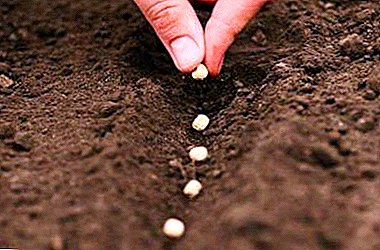 Seeds are sown in late winter - early spring.
Seeds are sown in late winter - early spring.- Seeds (in granules) are laid out on the surface of the moist loose soil. You can place an even layer of calcined sand on the surface of the soil and lay granules on it.
- Sprinkle the seeds regularly with a spray to prevent drying.
- In order to sprout shoots, you need to create a “mini-greenhouse” for them - cover them with translucent material (glass, plastic film, plastic) and place them in a well-lit warm place. Daily open the "greenhouse" for a short time, spray the seeds as needed.
- After 13-15 days you can expect the emergence of shoots. Soil for this should be a temperature not lower than +20 Celsius.
- Seedlings are recommended to transplant after the appearance of leaflets. Seedlings are placed in cassettes with soil 3 cm deep, the temperature must be reduced by 2-4 degrees.
- Grown up seedlings will need to be transplanted again: in a tank of about nine centimeters deep (reduce the temperature to 15 degrees Celsius).
- Extend the light day for seedlings best with the help of special lamps.
- In the open ground, seedlings are “relocated” after stable heat comes and there is no risk of sudden freezing. You can also take out the potted plants on the balcony or in the courtyard.
Bolivian Begonia - a charming and easy-care plant. Following simple guidelines, you can grow it at home or on the site and enjoy the beauty all summer.


 The flower pot can be of any material (it does not play a role for tuberous plants). It is only important to choose a capacity that is not too deep, but rather wide.
The flower pot can be of any material (it does not play a role for tuberous plants). It is only important to choose a capacity that is not too deep, but rather wide. Seeds are sown in late winter - early spring.
Seeds are sown in late winter - early spring.